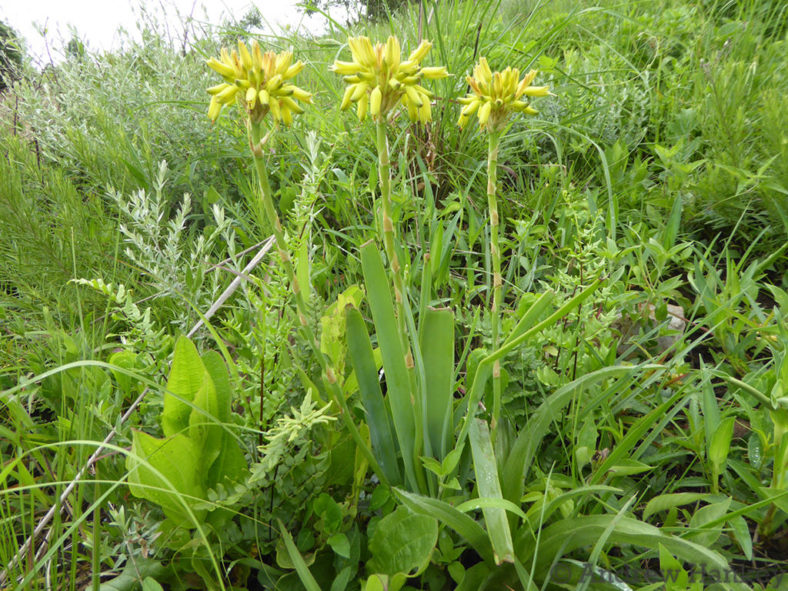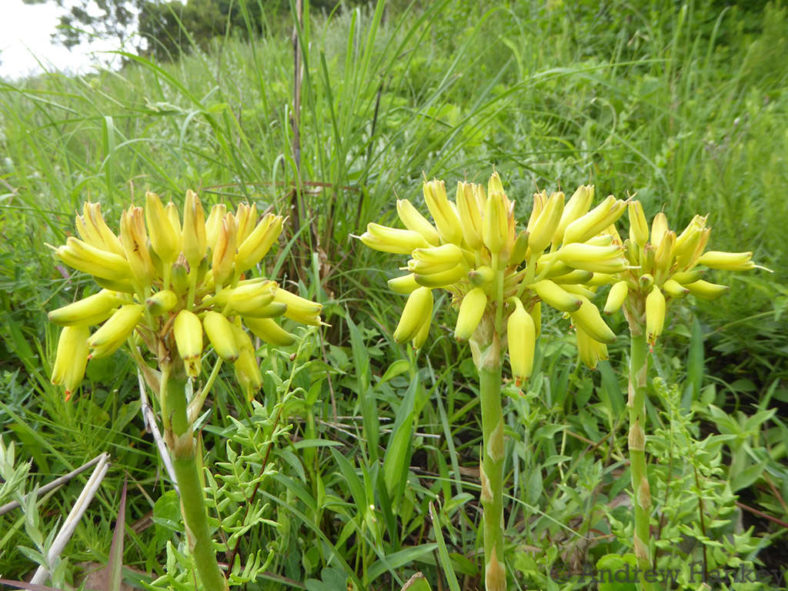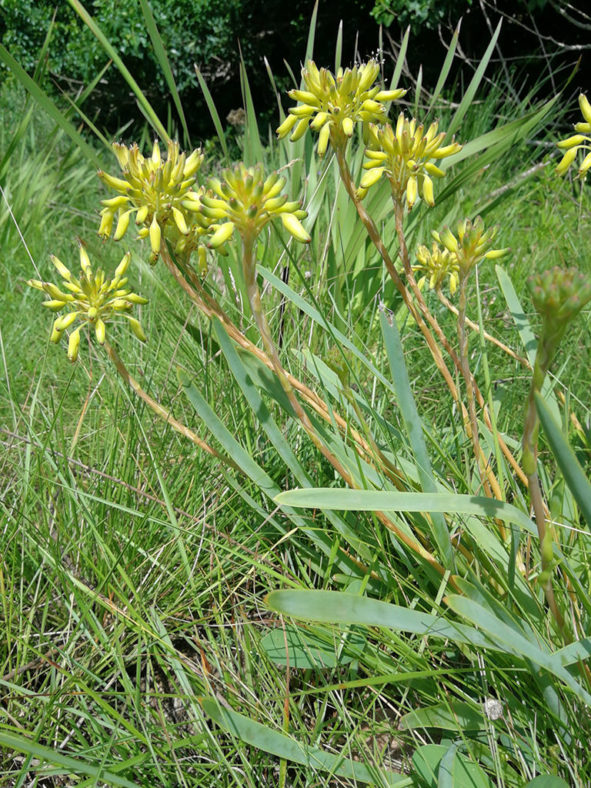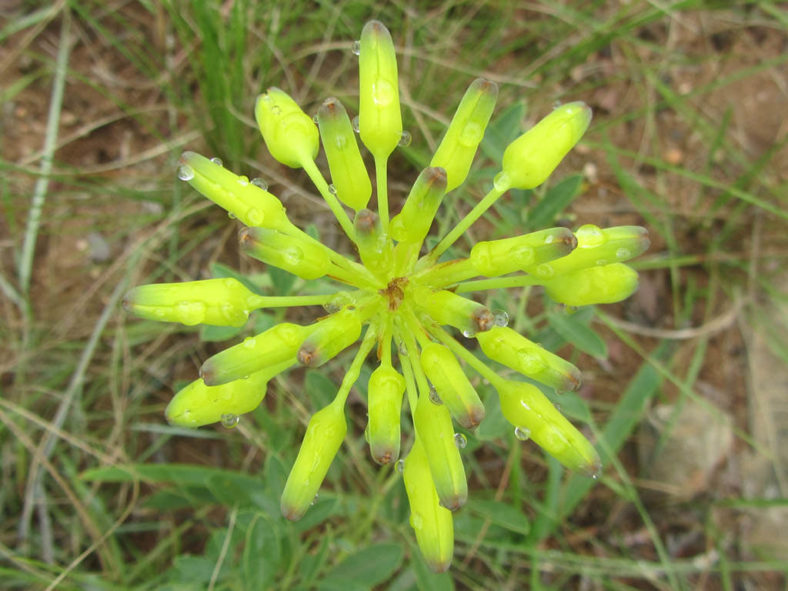Scientific Name
Aloe linearifolia A.Berger
Common Name(s)
Dwarf Yellow Grass Aloe
Scientific Classification
Family: Asphodelaceae
Subfamily: Asphodeloideae
Genus: Aloe
Etymology
The specific epithet "linearifolia (lin-ee-ar-ee-FOH-lee-uh)" means "linear leaves, leaves in a linear shape" and refers to the shape of the leaves of this species.
Origin
Aloe linearifolia is native to eastern South Africa (KwaZulu-Natal and Eastern Cape). It occurs in short, open grasslands near the coast or hilly inland areas.
Description
Aloe linearifolia is a small, stemless succulent with erect to erectly spreading leaves arranged in two opposite rows or rarely in the form of a rosette. It can grow up to 1 foot (30 cm) tall, usually as a solitary plant or occasionally branched at the ground level. This plant is one of the Aloes with a grass-like appearance, commonly known as Grass Aloes. The leaves are narrow, usually finely toothed and green, with white and brown spots near the base on the lower surface. They can measure up to 10 inches (25 cm) long and 0.4 inches (1 cm) wide.
The flowers are tubular, greenish-yellow to yellow, and can reach about 0.5 inches (1.3 cm) in length and 0.2 inches (0.5 cm) in diameter. They appear in late summer in a head-shaped raceme on a simple, erect stalk that can grow up to 14 inches (35 cm) tall.

How to Grow and Care for Aloe linearifolia
Light: When growing A. linearifolia indoors, place your plant in a window with plenty of bright indirect sunlight. Rotate the pot once or twice a week so that all sides of the plant receive equal lighting. Outdoors provide light shade, especially during the hottest parts of the day.
Soil: Plant A. linearifolia in a well-drained soil mix specially formulated for succulents or make your own. Drainage is essential because too much moisture around roots can cause root rot.
Hardiness: When temperatures shift below 50 °F (10 °C), it is time to bring your plant back inside. A. linearifolia can withstand temperatures as low as 25 to 50 °F (-3.9 to 10 °C), USDA hardiness zones 9b to 11b.
Watering: This succulent does need regular watering but is very tolerant of drought conditions for short periods. Water deeply, but only when the soil is dry. Cut back on watering during the winter months. Do not let water stand in the rosettes.
Fertilizing: A. linearifolia generally does not require fertilizer but may benefit from the extra nutrients. Feed with a fertilizer for succulents in spring and summer only. Be sure to follow the label directions.
Repotting: This plant is not particularly fast-growing and will only rarely need repotting. Repot it in the spring in a container a few inches larger in diameter every few years to keep it from becoming rootbound.
Propagation: Propagating A. linearifolia can be done by offsets, cuttings, or seeds from a mature plant. Remove offsets from the mother plant or take cuttings with a sharp knife in late spring or early summer. For best results, sow seeds during the warm months.
Learn more at How to Grow and Care for Aloe.
Toxicity of Aloe linearifolia
A. linearifolia is not listed as toxic for people and pets.
Links
- Back to genus Aloe
- Succupedia: Browse succulents by Scientific Name, Common Name, Genus, Family, USDA Hardiness Zone, Origin, or cacti by Genus
Photo Gallery
Click on a photo to see a larger version.


